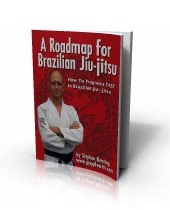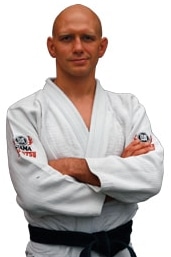
I’ve previously discussed breathing but have concentrated on unusual situations, like conscious hyperventilation and the Valsalva Maneuver. I should probably have started out by talking about something that is a bit more universally applicable.
Let’s talk about this: no breathing equals no oxygen equals total exhaustion.
Storytime: I once talked with a very frustrated and discouraged grappler. For the sake of this story, let’s call the grappler ‘Fred’. Anyway, ‘Fred’ was a fit guy who did lots of cardiovascular conditioning to help him with his endurance, but had an unusual problem with his grappling. In his own words:
“The situation seems to occur when I train against new people who are very aggressive, usually wrestlers. I try to relax, but it doesn’t seem to be working. I still seem to tense up and gas out. But when I fight guys who are so much better than me I can train for a long time and even roll for 30-40 minutes at a time with minimal breaks.”
In other words he had MORE endurance when he was sparring advanced people who kicked his butt than he did when he was grappling aggressive beginners.
It took some experimentation and discussion, but what we finally discovered was that he was holding his breath while fighting certain types of opponents. When he grappled beginners he tensed up and held his breath because he did not want to tap, or get schooled, by a beginner.
Against advanced grapplers he knew he was going to tap: he could accept that they were more skilled than he was, could concentrate on putting up a good fight and doing his best on the mat.
His anxiety was causing him to hold his breath. No breathing equals no oxygen equals total exhaustion.
How long could Lance Armstrong in his prime climb on his bike up some mountain in the Alps if he was holding his breath? How long could Roger Bannister have sprinted around the track if he hadn’t been able to breathe?
Not very long.
When you’re working hard you HAVE to take in sufficient oxygen to sustain the energy output!
For our friend Fred the solution was fairly simple: he had to concentrate on his breathing before all else. He started to focus on inhalation and exhalation while doing pushups, while doing Yoga and especially while grappling.
Fred also used a fairly simple tool to ensure he wasn’t holding his breath while grappling: every 5 or 10 seconds he would check in on his breathing and ask himself if he was holding his breath. Submissions, body positions and techniques were all secondary to focusing on the breath, making sure that it continued to flow in and out during the heat of the battle.
Here is what happened in Fred’s words:
“When it came time for sparring, I picked one of the heavier aggressive guys to go against. I did what you said and kept reminding myself to breathe. Every 5-10 secs I was just saying to myself breathe, breathe, and breathe. I wasn’t even thinking ‘too hard’ about my attacks and defense, I just wanted to relax and flow.”
“But you know what happened, I was thinking so clearly. I subbed this guy 5 times in 5 minutes! I have never subbed anyone that many times before in that amount of time. I hit triangles (I suck at triangles, trust me) twice, two of your kneebars, and then the ‘Minotauro’ choke.”
“The important thing was I wasn’t even trying, it was weird. I mean I wasn’t lying like a log, but I was just focusing on breathing rather than just trying to ‘fight’. And everything was so clear. I even let this guy take my back and pass my guard, but I recovered easily.”
“The next rolling partner I had was a solid blue and I asked him to just smash me. He did smash me, but I wasn’t gasping from escaping. I kept breathing and just trying to remember good posture. It was really good. I gave him a tough time and he really had to work to get me.”
“The next partner was probably the same level as me. I kept the breathing concept in mind and I nailed some more moves I don’t easily pull off normally in sparring.”
Things went really well for the next couple of weeks. So well, in fact, that he decided to enter a NAGA tournament:
“Well since everything has been going so well thanks to you I am gonna put my money where my mouth is and compete in NAGA in 2 weeks. My wrestling is something that needs improvement but I feel confident enough that my other attributes will even things out.”
Shortly thereafter I received an email from Fred: below you can read parts of it:
 “Stephan! I won my division in NAGA.
“Stephan! I won my division in NAGA.
Thanks so much for all your help. I was doing well with my breathing until the finals, where I left it all on the mat. I did not notice I was breathing a lot until they called time and I felt the exhaustion. But no one scored any points on me and I got some nice armbars …
Throughout my matches I did the breathing check every 10 seconds. If you told me to compete in NAGA 2 months ago I would have laughed and thought you were crazy.”
If you find your endurance fading unexpectedly, be it when fighting certain types of opponents or in certain situations (competition at tournaments, sparring at other clubs, etc.) the FIRST thing you could do is to ensure that you aren’t holding your breath.Ask someone to watch you, and/or do an internal breathing check every 5 or 10 seconds.
Think a little bit less about technique and constantly remind yourself “breathe, breathe and breathe!” You may be pleasantly surprised.
If you’re interested, I also recorded a short podcast episode on this same topic.
To hear this podcast episode in full, you have a couple of options. The first one is to just press play on the embedded player below – easy as 1,2,3! The second (and better!) option is subscribing to The Strenuous Life Podcast so that you don’t miss out on any future episodes. To do this, you just need to click on your chosen audio player that is compatible with your device – one click and you’re on your way!
- Apple Podcasts (the purple app on your iPhone)
- Stitcher,
- All other podcast platforms
Or as promised, the embedded audio player is below:
My podcast includes both these short-form episodes as well as longer, in-depth interviews. Let me know which format you prefer on twitter (@stephankesting), snapchat (‘stephankesting‘), instagram (@stephan_kesting) or Facebook (Facebook.com/grapplearts)
Fixing Your BJJ Breathing Problems
We’ve been talking about how proper breathing is so important, and unconsciously shallow breathing is the number one reason that people gas out during hard rolls.
This problem is even worse for some people when they compete. The stress of competing against an unknown opponent in front of spectators makes some people hold their breath like they’re free-diving for pearls on the ocean bottom.
99% of the time in jiu-jitsu you want to take big, steady breaths to saturate your blood with performance-enhancing oxygen.
So now that we’ve identified a problem, what’s the solution?
I’ve got four different ways to fix this problem that have worked for people I know….
FIRST, PRIORITISE BREATHING.
Most of your sparring sessions should have some sort of focus.
For example, you might have the intention of working on your guard retention, your guard passing, a certain submission, or countering a training partner’s best move.
But if you’re having problems with holding your breath during sparring, then forget about the techniques and apply that same focus to your breathing.
Instead of worrying too much about advancing your position or setting up submissions, just flow and check in with yourself every few seconds by asking, “Am I breathing“.
British paratrooper and adventurer Andy Torbet once said, “Deal with the crocodile closest to the canoe.”
In this case, breathing is the crocodile. Deal with that first.
SECOND, LINK YOUR MOVEMENT TO BREATH
One high-level blackbelt I knew had a plan to keep him on the offence.
His heuristic was this: every time he took a breath, he’d try to advance his position somehow.
Breathe and get a better grip… Breathe and shift his hip… Breath and climb his legs… Breath and attack with the armbar.
If you’re having problems breathing effectively, then I want you to turn this heuristic around.
Use every single movement, or new grip, or shift of your hips whatever, or as a cue to breathe.
Plant your foot and use that as a cue to breathe… Shift your hip and use that as a cue to breathe… Swing your leg over his head and use that as a cue to breathe.
Eventually, your movements will link to your breathing, and it will feel weird to do one without the other.
THIRD, ASK YOUR TRAINING PARTNERS FOR FEEDBACK
In most academies, it’s normal to ask your training partners to start in a certain position. Hardly anyone says no if you say, “Hey, I want to work on my side control escapes, can you start on top?”
(After all, a good training partners wants to make you better.)
Therefore, simply ask your training partners to let you know if you’re holding your breath or not breathing effectively.
Now you’ll have two people making sure you’re not holding your damn breath!
Preferably, ask reasonably advanced practitioners to give you this feedback.
That’s because as you get better you’ll probably be monitoring your opponent’s breathing anyway in an attempt to see where his energy levels are at and if he’s giving you any clues about what he’ll do next.
Anyway, like they say in preschool, use your words!
FOURTH, USE EXERCISE TO IMPROVE BREATHING
I’m a huge advocate for the importance of cardio and weightlifting, both for jiu-jitsu and for life in general.
Obviously, the more fit you are then, the better your performance on the mat will be.
But that’s not exactly what I’m suggesting here…
There actually is an argument for holding your breath during hard physical activity, but onnly if you’re doing a one-rep max deadlift or trying to hulk your way out of a triangle choke. This is called the Valsalva manoeuvre, and it’s part of effective bracing which stabilises the spine.
But you can’t hold your breath and do extended exercise. If you do cardio or weight training with more than five to eight reps in a set, then you have to breathe.
A typical runner might take two steps and breathe in, then take another two steps and breath out.
Similarly, if you do 40 kettlebell swings then you HAVE to be very deliberate about your breathing, usually inhaling on the downswing and exhaling at the top of the upswing.
Using high-rep exercise forces you to consciously link your breathing and your movement, which will then have carryover to your jiu-jitsu.
Holding your breath during stressful moments on the mat is normal, but once you recognise this as a problem you CAN work on it and fix it!
Good luck with your breathing,
Stephan Kesting


